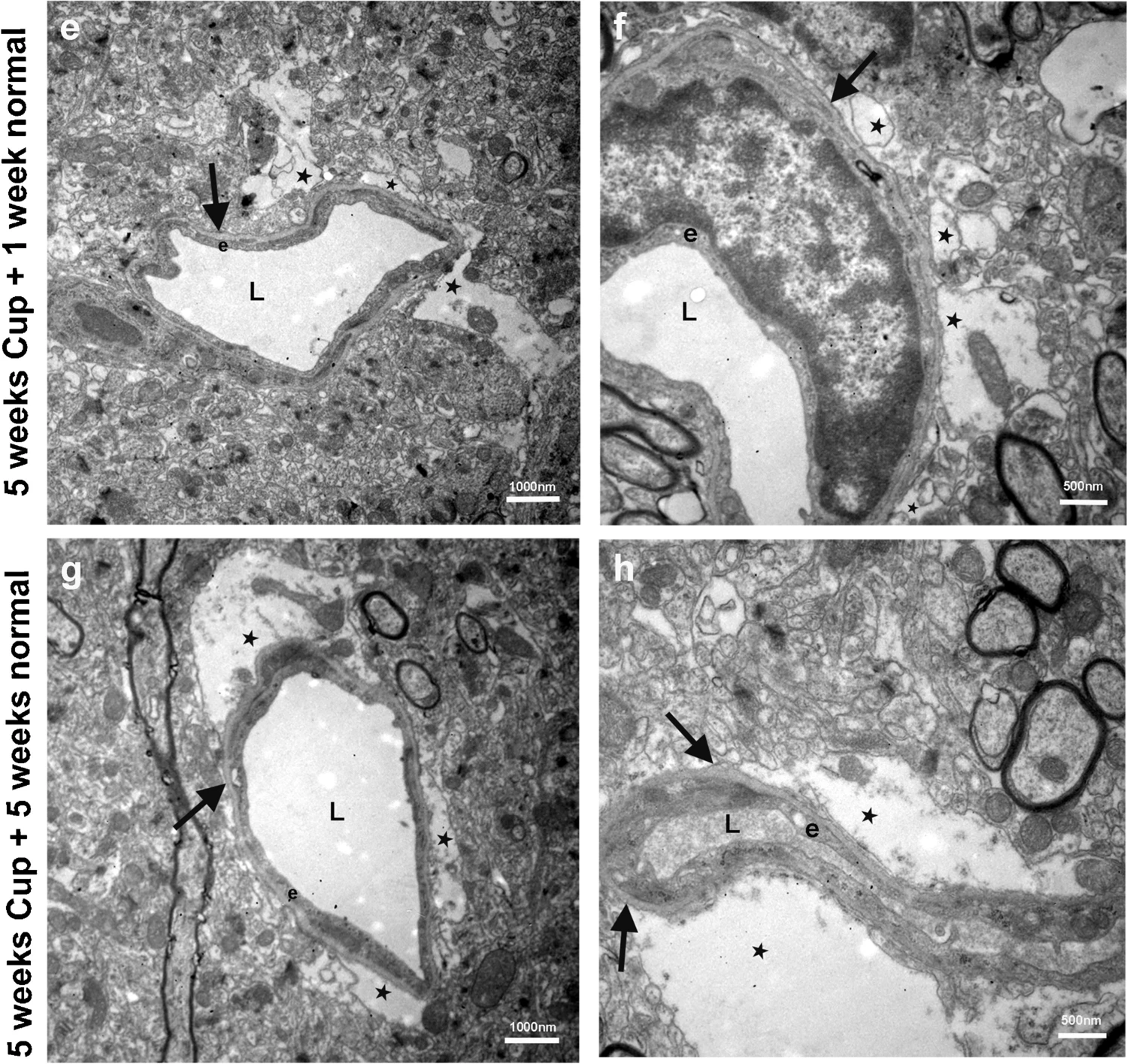Cuprizone feeding induces swollen astrocyte endfeet

The cuprizone model is a widely used model to study the pathogenesis of multiple sclerosis (MS). Due to the selective loss of mature oligodendrocytes and myelin, it is mainly being used to study demyelination and the mechanisms of remyelination, as well as the efficiency of compounds or therapeutics aiming at remyelination. Although early investigations using high dosages of cuprizone reported the occurrence of hydrocephalus, it has long been assumed that cuprizone feeding at lower dosages does not induce changes at the blood–brain barrier (BBB).
Here, by analyzing BBB ultrastructure with high-resolution electron microscopy, we report changes at astrocytic endfeet surrounding vessels in the brain parenchyma. Particularly, edema formation around blood vessels and swollen astrocytic endfeet already occurred after feeding low dosages of cuprizone. These findings indicate changes in BBB function that will have an impact on the milieu of the central nervous system (CNS) in the cuprizone model and need to be considered when studying the mechanisms of de- and remyelination.
The article is accessible on the following DOI: https://link.springer.com/article/10.1007/s00424-022-02759-8
- 119 views
